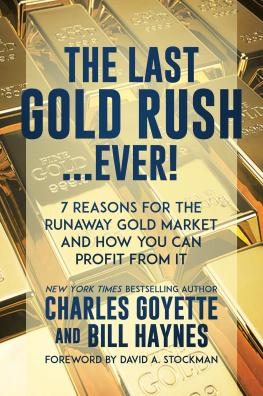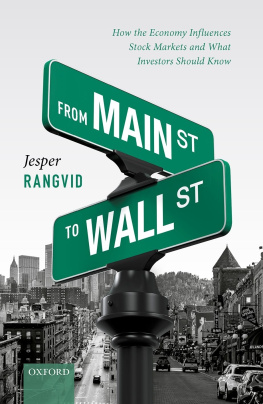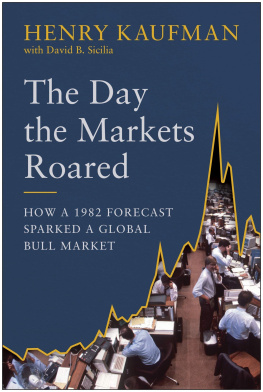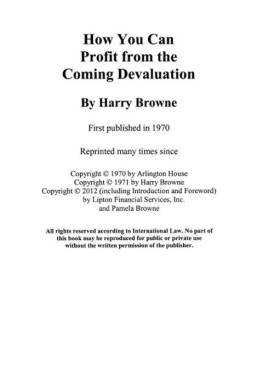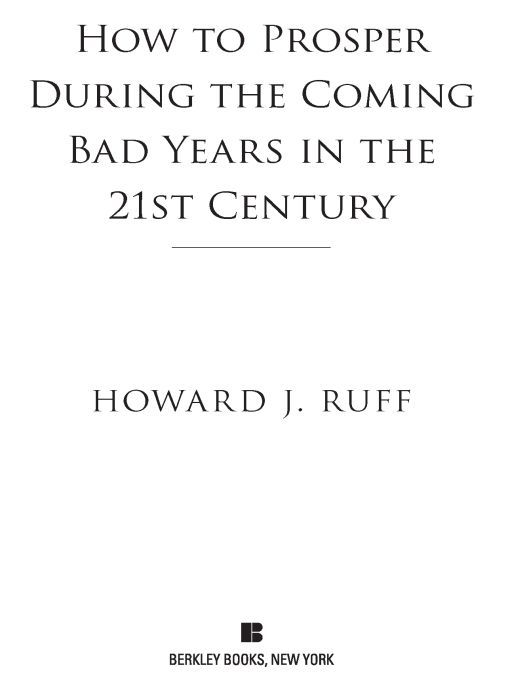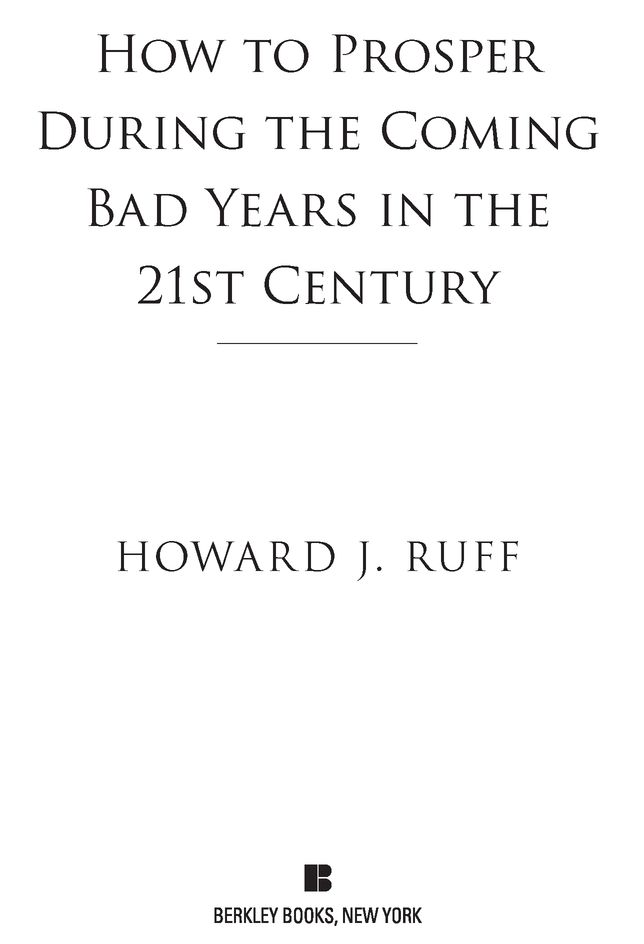Table of Contents
A great American religious leader once said, No success in the world can compensate for failure in the home. And when all is said and done (more is said than done), if nothing else I ever do works, if I achieve success in that all-critical area, my life will have been a success.
To this end, I dedicate this book to the following people: my magnificent wife, Kay; our children, and the rest of our posterity; plus my faithful assistant and dear friend, Joann Allen, who has been with me more than twenty-five years and typed every word of several drafts of this book.
This book is also dedicated to my 600,000 newsletter subscribers over the years who have demonstrated their love and appreciation.
Acknowledgments
I would be remiss if I failed to acknowledge some of the people who made this book possible.
First, there is Cliff Brokaw, who served on my corporate board in the 1970s. The first edition of this book in 1977 was written not to be published as a book, but as a basic manual for new subscribers during The Ruff Times growth years. But when Cliff read it, he urged me to show it to several New York publishers who were friends of his. At Times Publishers, its president, Tom Lipscomb, saw the potential of the book and made me an offer, which I accepted. Together, and in part due to his support, marketing skill, and commitment, we made publishing history with the 1989 edition, which sold 2.6 million copies.
I must also express my love and thanks to my wife, Kay, who has been the very definition of a supportive wife, and is the mother of our fourteen children (nine homemade and five adopted as teenagers). They have given us seventy grandchildren and still counting.
Then there are the numerous unnamed but appreciated employees over the years, not the least of which is Joann Allen, my beloved personal assistant for over twenty-five years, who typed numerous drafts of this edition.
Last, but not least, there is my agent, Adam Chromy, and my editor at Berkley Books, Denise Silvestro, who saw the timeliness of the material, and pushed for the book to be published much sooner than the usual one year publishing cycle.
PREFACE:
ITS DJ VU ALL OVER AGAIN
How to Prosper During the Coming Bad Years was originally published in 1978. I have decided to update it and republish it because the past has come around to haunt us again. The same factors that created the stagflation and the gold and silver bull markets of the late seventies and early eighties are back in spades, and you, as middle class investors, stand to lose just as much as the millions of people who suffered in that era, or bet on the wrong trends.
Rather than write a new book that describes the same situation and tells you the same ways to prepare and profit, I felt it would be easier to create an updated edition of a book that was right on the money thirty years ago, and is again, even more so.
So this book is valuable for todays economic climate. I have eliminated three chapters that are no longer relevant, and Ive added three more as a result of having thought about these subjects for thirty years. Im not getting older; Im getting smarter.
Take the advice to heart; it really matters. Most of the advice from the seventies is not only just as good today, its better.
In the late seventies and eighties, economic factors combined to produce a period of inflation and recession unparalleled in our countrys history. Those same factors produced the big bull markets for gold and silver, and made people who had the foresight to invest in those areas prosperous, despite the condition of the stock market and the economy. Thats when I published the original edition of this book, How to Prosper During the Coming Bad Years. I showed people how to prepare for economic hardship and profit in spite of it by investing in gold, silver, and selected commodities and mining stocks.
Unfortunately, those same economic conditions that created the stagflation of the seventies and eighties are here againonly this time theyre more pronounced. And you as investors stand to lose just as much as people did thirty years ago. With the effects of the real-estate market collapse still rankling through the economy, major businesses reporting billions in losses, and the stock market more volatile than ever, investors today dont know where to turn The government certainly isnt giving you the information you need to know, and neither are your financial advisers.
Thats where this book comes in. In the original 1977 edition, I showed people how they could earn money and gain financial stability by making relatively conservative investments in gold and silver. Im going to do the same thing nowonly now Ill tailor my advice specifically to the twenty-first century. To your generation.
This book was originally conceived as a basic text for the hundreds of thousands of subscribers to my financial newsletter, The Ruff Times, where I talked and continue to talk in detail about my economic theories. But I believe those principles still hold true today. Some of the material in this book is derived from The Ruff Times; some, Ive updated from the first edition. But much of the material in this book is totally new, derived from my further studies. That means this book will be useful to longtime Ruff subscribers, as well as new readers.
If you want to survive and prosper during the coming bad yearsand I believe theyre here now or right around the corneryou need this book. You need to know what I have to tell you.
But before I tell you more about your future, let me take you back a few years to where it all began for me.
The Beginning
One day in November 1968, I went to my office to attend a meeting at which I thought I would receive some help and advice from the people who managed the national company with which I owned a speed-reading franchise. I was just beginning to emerge from a very difficult few months, resulting from a prolonged newspaper strike that hit without warning and prevented my company from advertising during our peak months. We had been in financial trouble for some time, but things had started to improve.
When I walked out of that meeting though, my franchise was cancelled and I was wiped out. The struggle to save my company was over. I went to work rich (I thought) and came home broke. My business was down the tubes. My bank had been notified and my accounts were frozen. I had $11.36 in my pocket. I had no money, no job, and no unemployment insurance, because, at the time, there wasnt any such thing for small businessmen. My rather spectacular collapse hit the front pages of the financial sections of the San Francisco Bay Area papers, and I was invited to resign from the Oakland Symphony Finance Committee, because I was embarrassing them. It was a terrible period in my life. It was the crowning blow for me and my wife, as it had only been five months since the accidental drowning of our beautiful twenty-one-month-old son, Ivan.
It was in the depths of that despair that a chain of events began that culminated in the first edition of this book. My family and I decided that such pain, public humiliation, and grief had to be put to some positive purpose for others, as well as for ourselves. So I went to work, armed with determination to learn everything I could from that business failure so it would never happen to me again. It was then that I resolved to apply the principles I had learned from a variety of life experiences.


